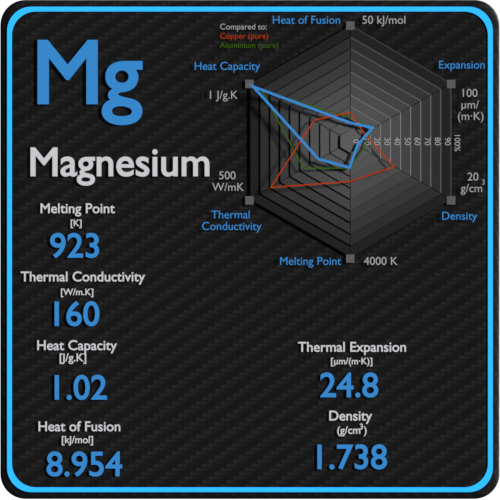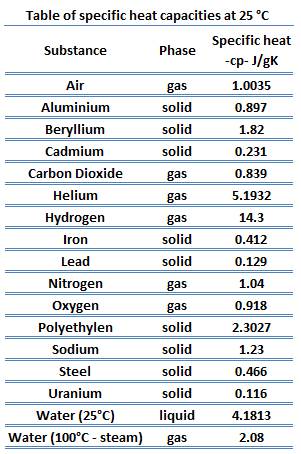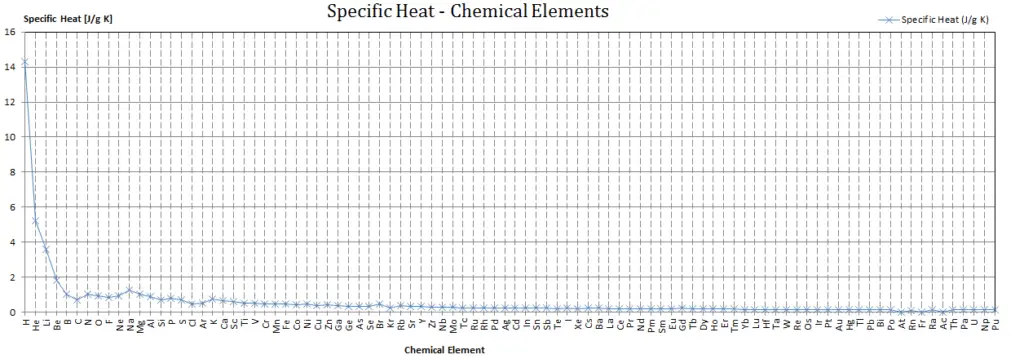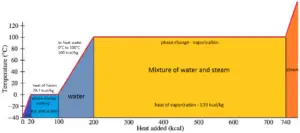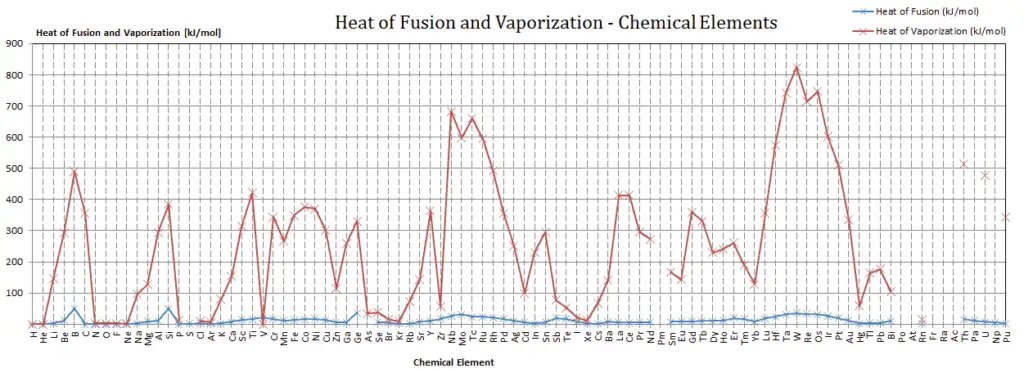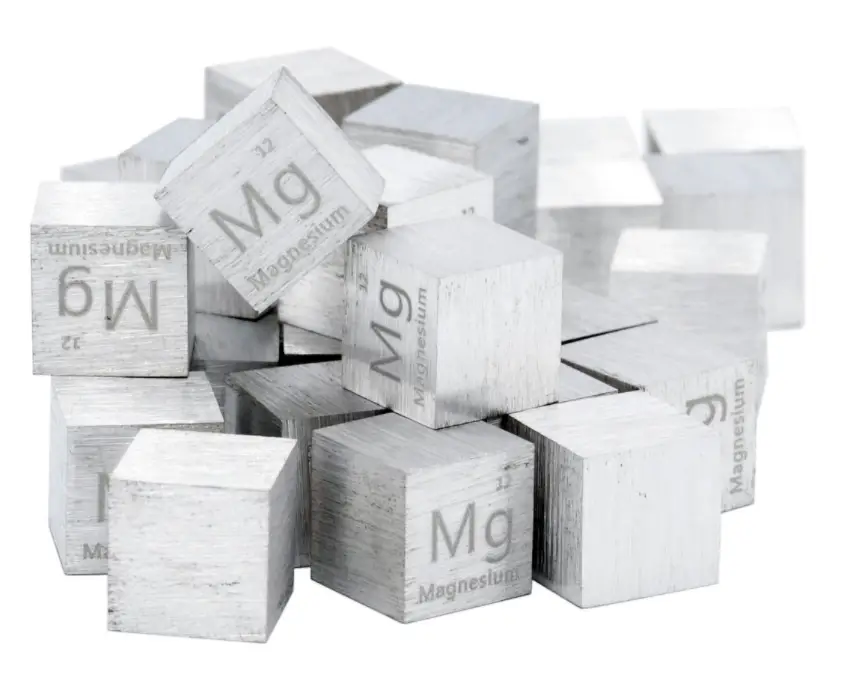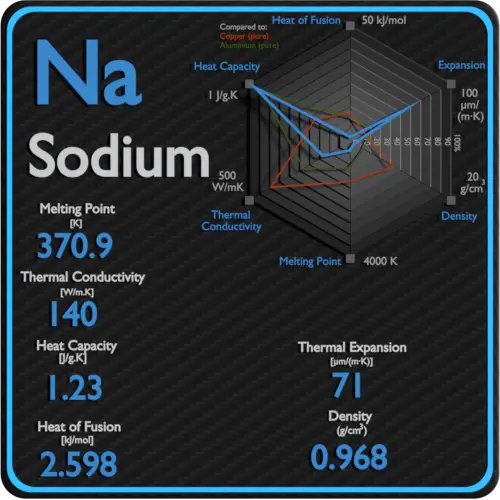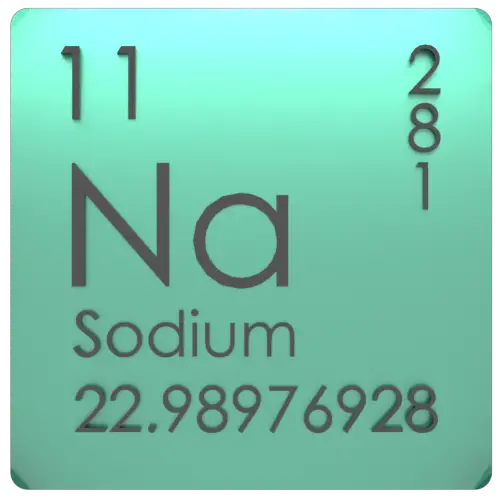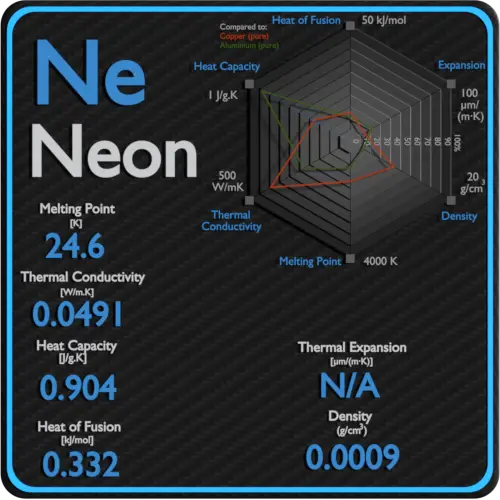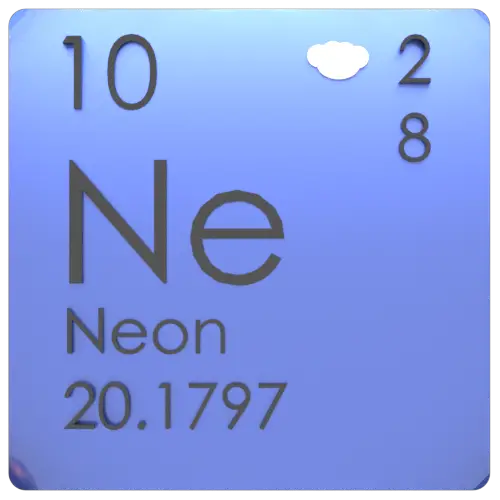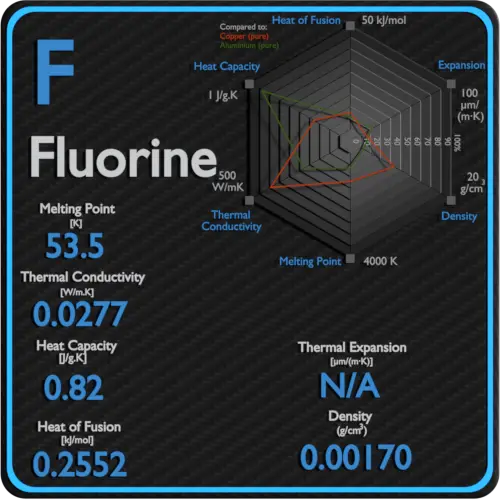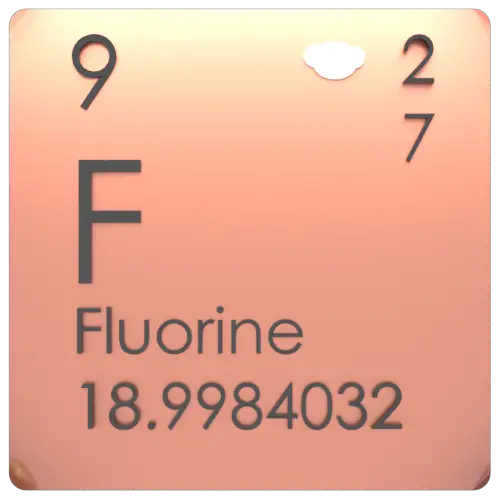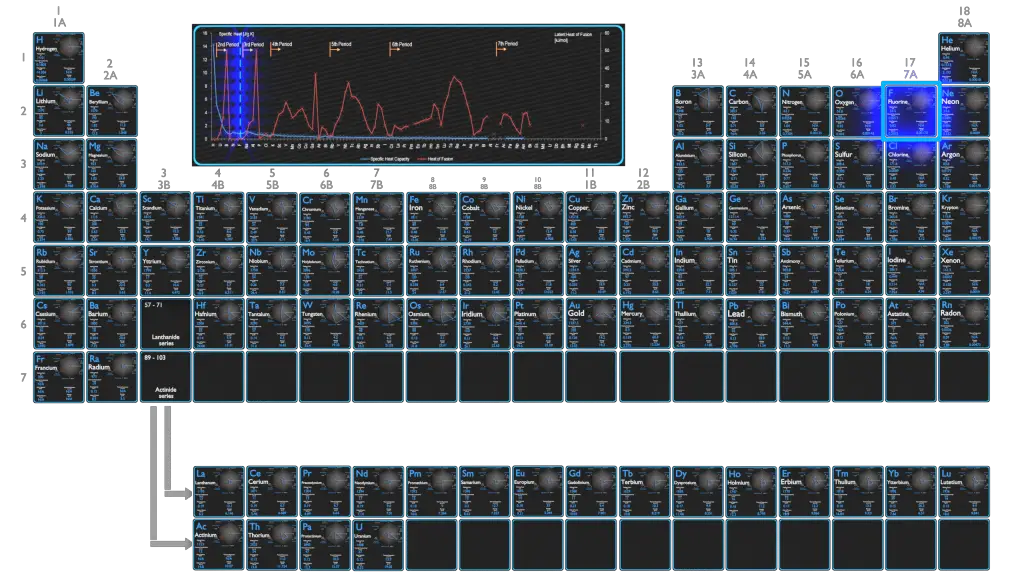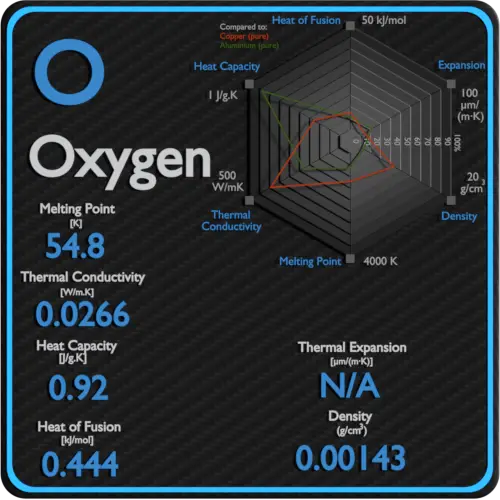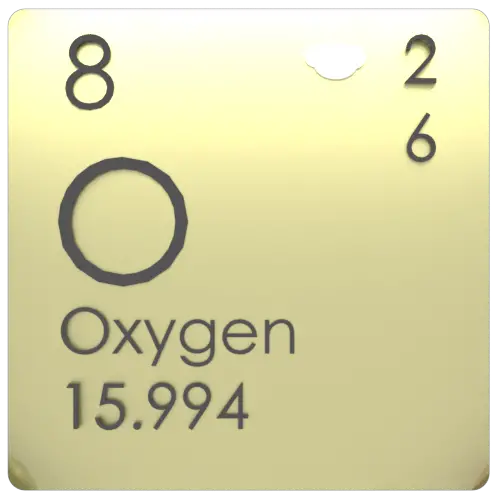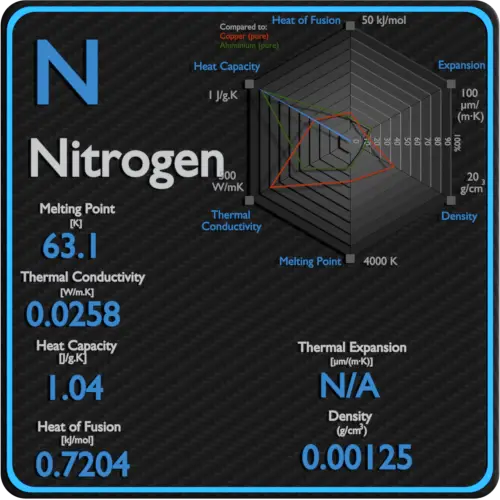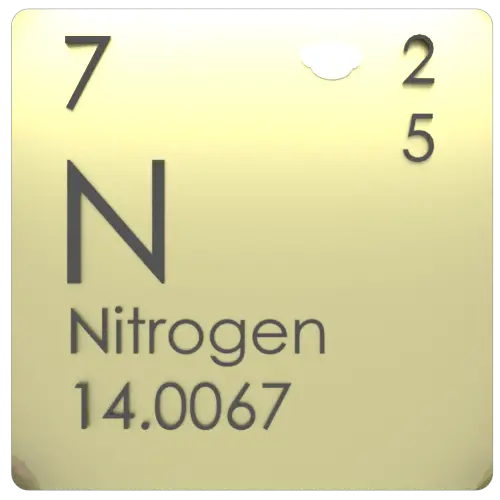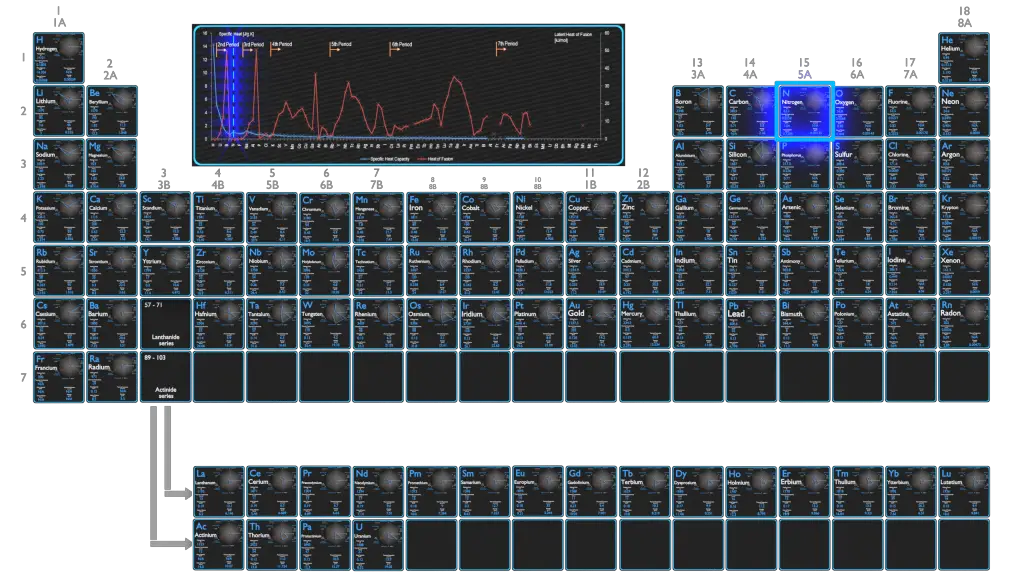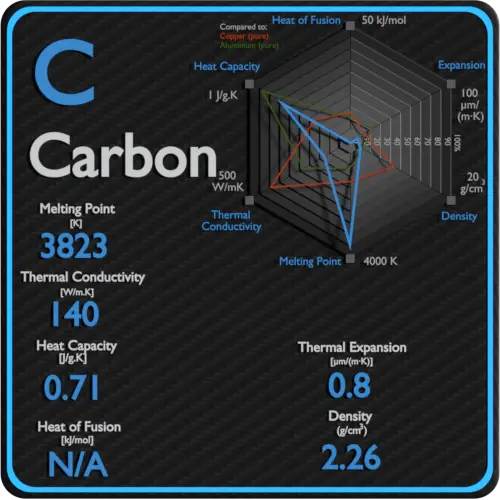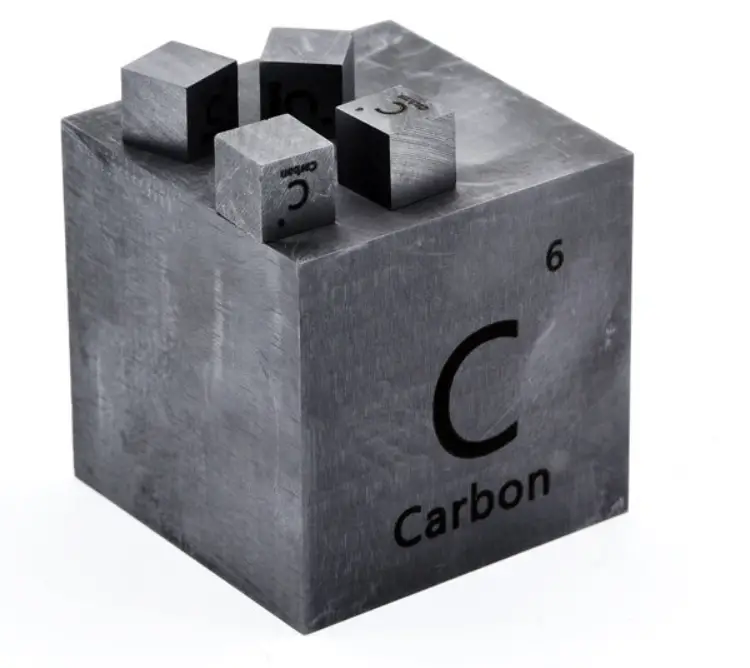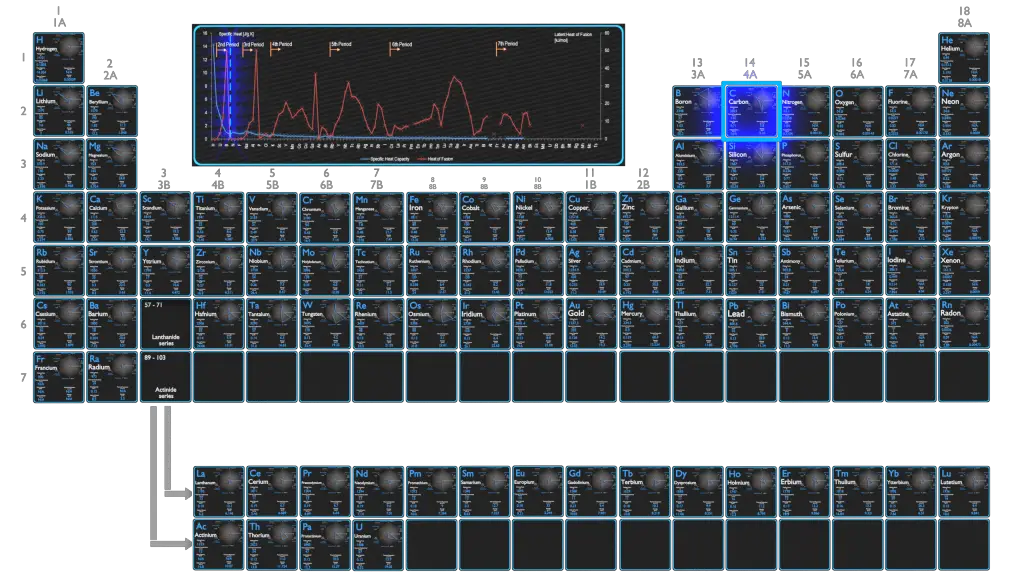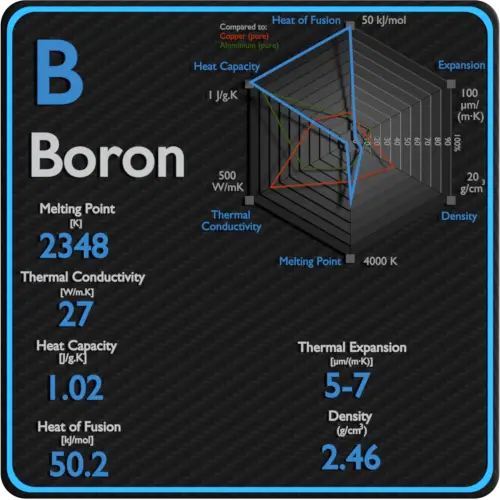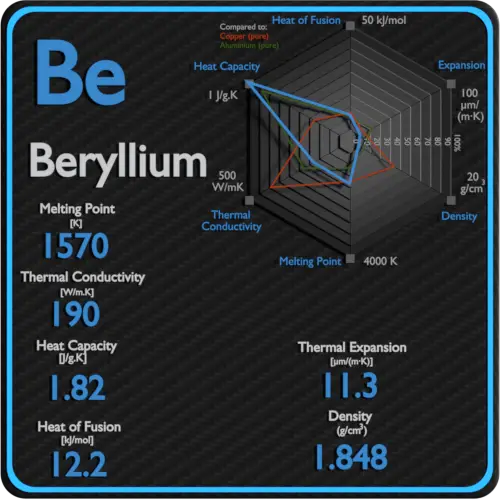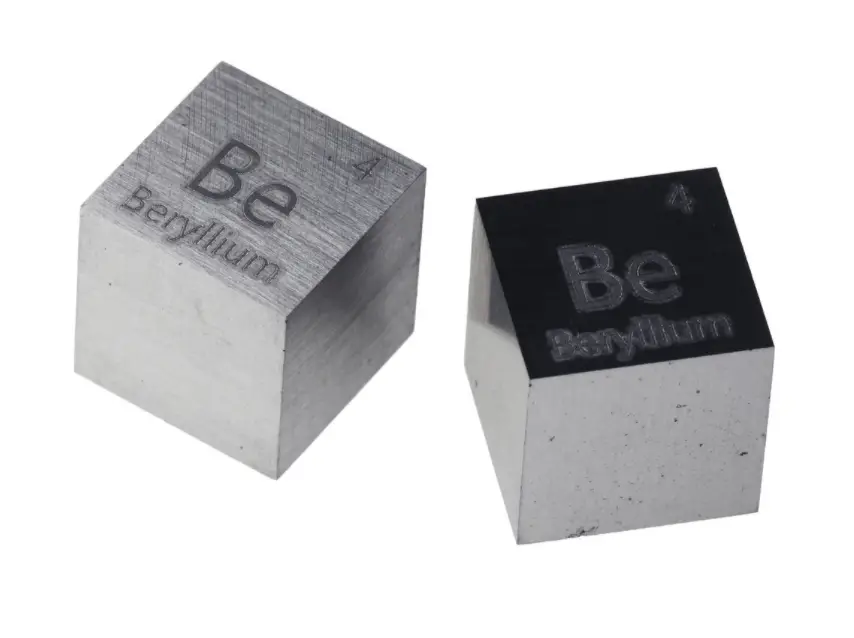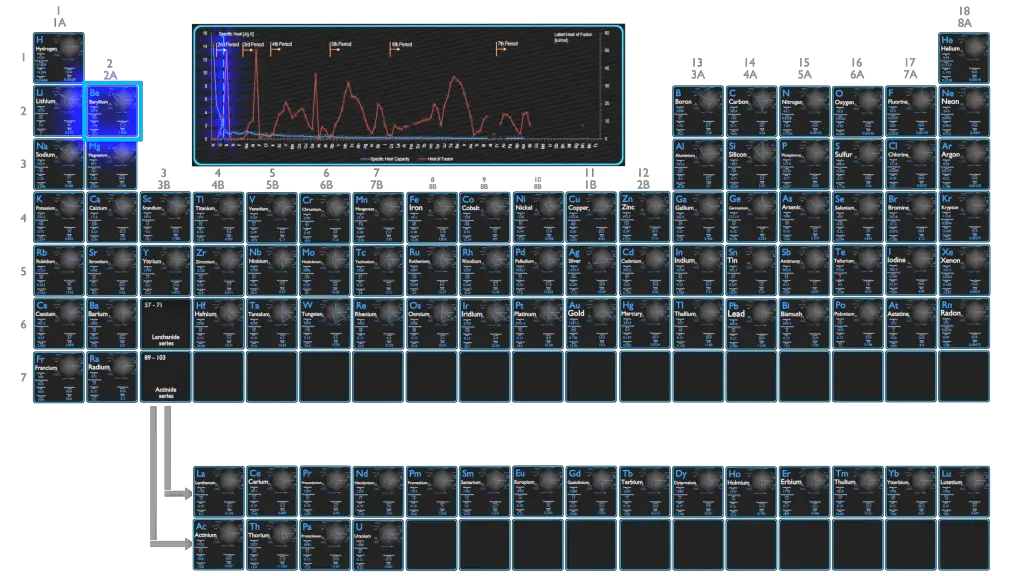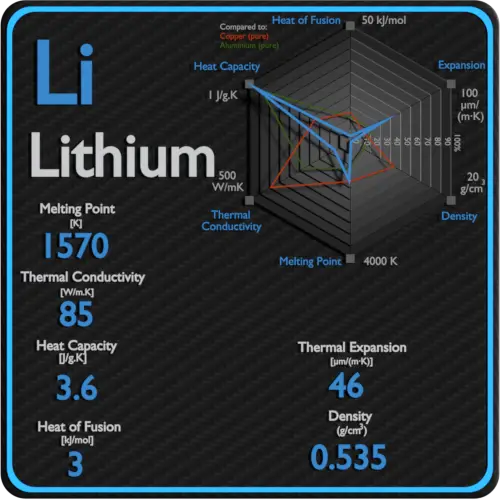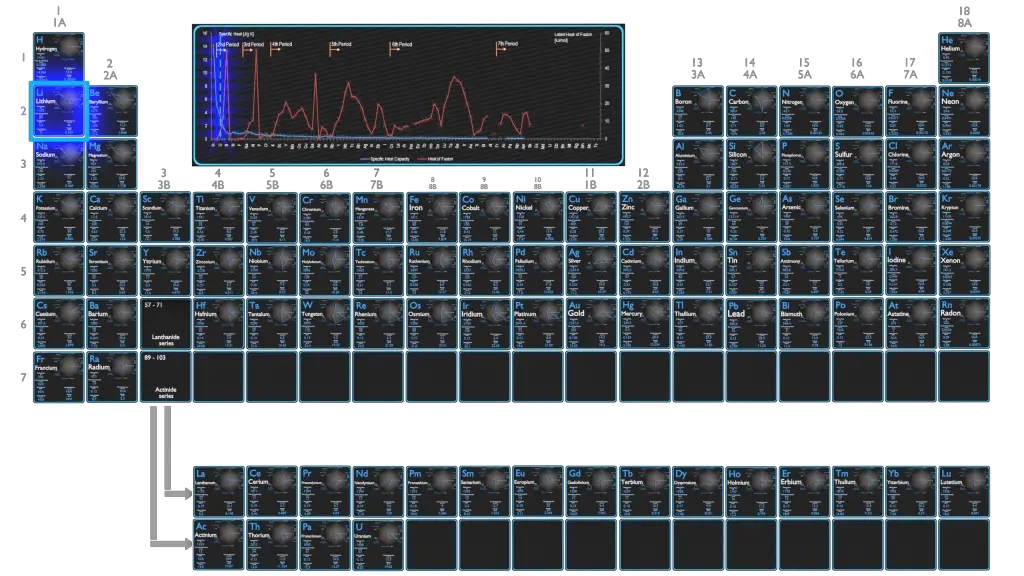About Magnesium
Magnesium is a shiny gray solid which bears a close physical resemblance to the other five elements in the second column (group 2, or alkaline earth metals) of the periodic table: all group 2 elements have the same electron configuration in the outer electron shell and a similar crystal structure.
Magnesium – Specific Heat, Latent Heat of Fusion, Latent Heat of Vaporization
Specific heat of Magnesium is 1.02 J/g K.
Heat capacity is an extensive property of matter, meaning it is proportional to the size of the system. Heat capacity C has the unit of energy per degree or energy per kelvin. When expressing the same phenomenon as an intensive property, the heat capacity is divided by the amount of substance, mass, or volume, thus the quantity is independent of the size or extent of the sample.
Latent Heat of Fusion of Magnesium is 8.954 kJ/mol.
Latent Heat of Vaporization of Magnesium is 127.4 kJ/mol.
Latent heat is the amount of heat added to or removed from a substance to produce a change in phase. This energy breaks down the intermolecular attractive forces, and also must provide the energy necessary to expand the gas (the pΔV work). When latent heat is added, no temperature change occurs. The enthalpy of vaporization is a function of the pressure at which that transformation takes place.
See also: Mechanical Properties of Magnesium
Summary
| Element | Magnesium |
| Specific Heat | 1.02 J/g K |
| Heat of Fusion | 8.954 kJ/mol |
| Heat of Vaporization | 127.4 kJ/mol |
| Density | 1.738 g/cm3 |
Source: www.luciteria.com
